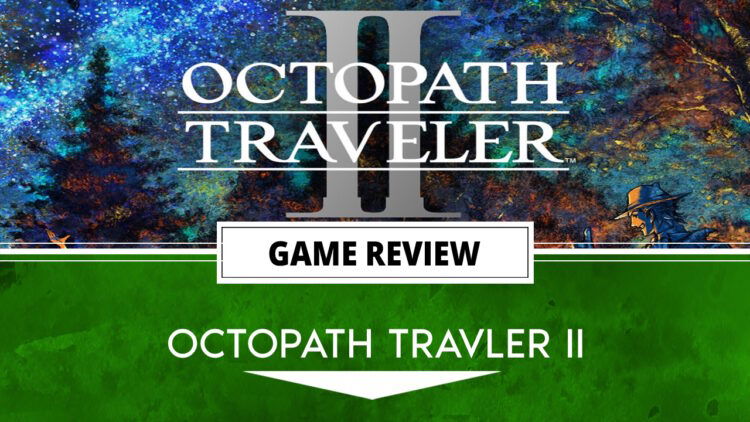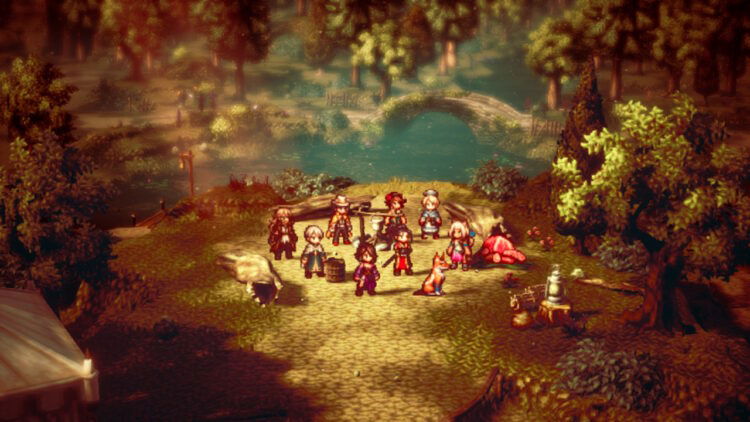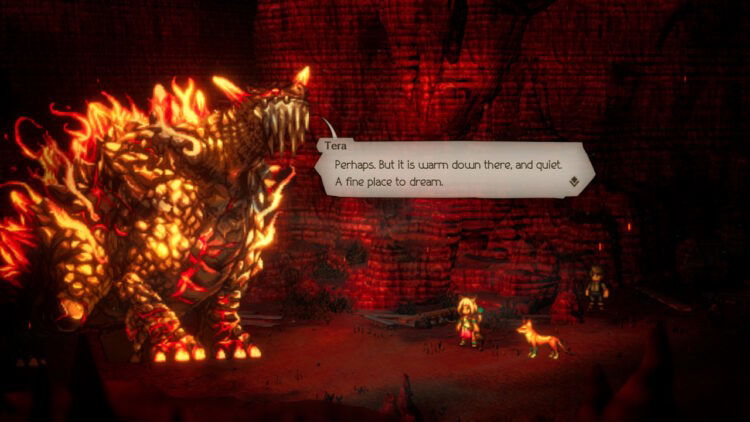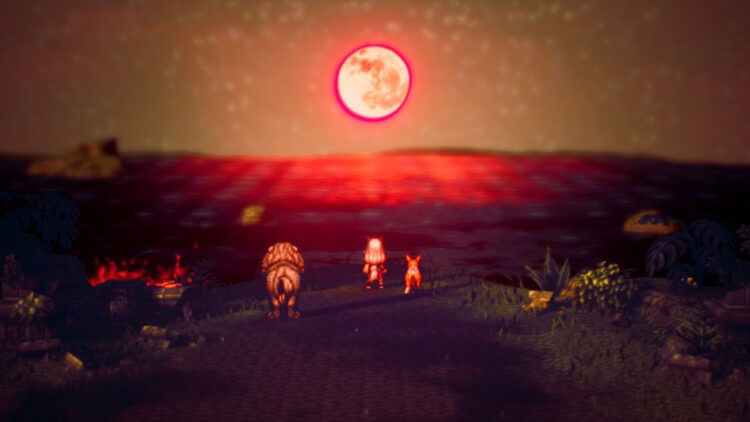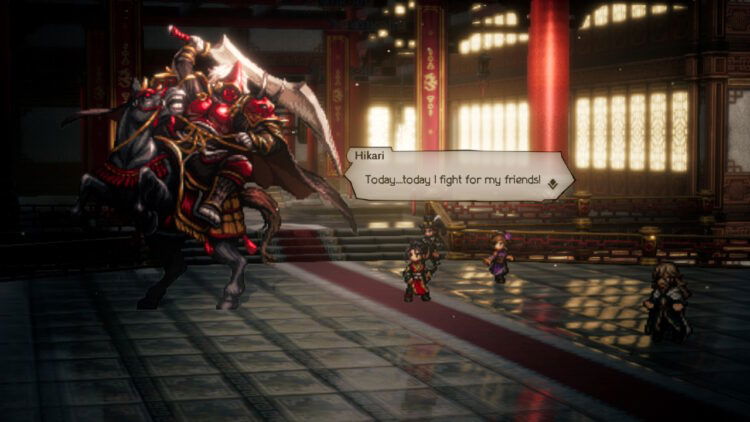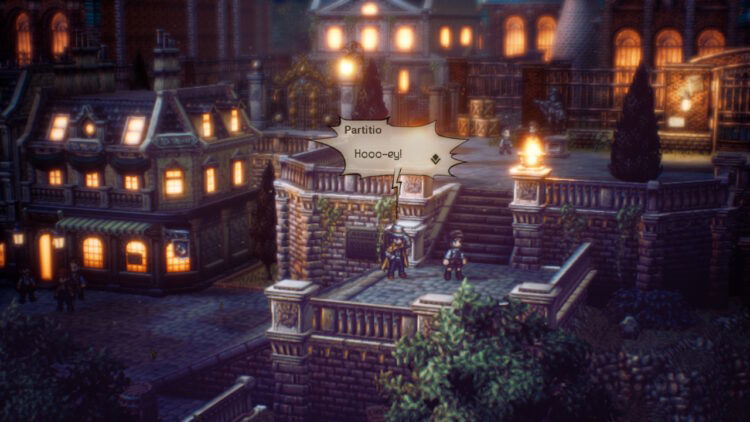I still remember when the original Octopath Traveler was announced for the Nintendo Switch. It was the first time the 2D-HD graphics had been shown, and I was…a bit “meh” about it. But, the more that they showed and delved into the game, I knew I had to try it. As my review still shows, I loved it, and it’s one of my favorite RPGs on the Switch to this day, and regarded as one of the best RPGs on the Nintendo Switch. So when Octopath Traveler II was revealed for the Switch (and also PS4/PS5 and PC), I knew I had to have it. Fast forward 55 hours of in-game time later, and I’m 99% done with the title, and the game lives up to the legacy…despite not improving in all the ways that matter, as my Octopath Traveler II Review will show.
Game Name: Octopath Traveler II
Platform(s): Switch (reviewed), PS4/PS5, PC
Publisher(s): Square Enix
Developer(s): Square Enix
Release Date: February 24, 2023
Let’s start with the positive because much of what you loved about the first game carries over here—starting with the 2D-HD graphics. To be blunt, they are prettier than ever before, and you can tell that the dev team worked hard to flesh out the environments and the pixel graphics to be as stunning as possible. Seriously, there were multiple times during the game when a certain shot popped up and I had to take a screenshot. Not just for my reviews’ sake, but because I wanted that screenshot to be taken to appreciate its beauty. You can also see their improvements with things like the animations, how certain boss characters are rendered, etc. The 2D-HD style will live on thanks to games like this, and I can’t wait to see how they further advance it.
Oh, and the music of the game? Fantastic. From the classic theme, to the boss fights, to some personal tracks, everything sounds incredible.
Moving onto the stories and characters, like before, we have eight new characters with new tales to tell. This time, we have Patritto, Agnea, Hikari, Osvald, Temenos, Throne, Ochette, and Castti. While there is some overlap with past characters, they all shine in ways that make them unique, especially when you pair them with their stories. For example, I decided to start out with Patritto, and his tale of trying to “cure the disease that is poverty” was very moving. By the end, you’ll want to know someone like him because we honestly need him in our world. The same goes for characters like Agnea and Hikari, who want to make the world a better place and bring happiness to others.
While some will state that some of these stories are “simple” or even “classic arcs,” there are plenty of twists to go around. A great example is the tales of Throne and Temenos. Throne seeks freedom from her life as a Blacksnake (a Thieves Guild), and yet the only way to do so is to wipe out the very clan she was raised in. As for Temenos, he’s an Inqusitor for a church whose “mission” is to “doubt” everything he sees, which leads him to a grand mystery with many twists and turns.
Like with the last games, there are stories you’ll like more than others, and I’ll talk about my thoughts on the lesser ones and their endings later. But make no mistake, the overall narrative that each one weaves holds up, and you’ll be eager to see where each one goes next. I won’t spoil the endings for any of them, but some of them do get really DARK. You’ve been warned.
Another significant highlight is the battle system. The game continues its tribute to old-school RPG mechanics while also building up what they did before. For example, outside of new secondary classes to enjoy, there’s the new “Latent Power” that each character has that’ll let you unleash special boosts or powers in battle. Each one is unique to the character, and if you play them right, you can change the flow of battle. For example, Patritto’s lets you instantly have a full BP gauge, which I used to full effect as often as I could to deal major damage.
Seriously, the battle system is basically flawless. The only “issue” I had on my end was the fact that you could easily get into such a rhythm that you press the wrong button and do the wrong type of attack. Also, some characters have more options than others, so you can get lost in the menus if you are not careful. Consider that a word of warning.
Some of the best moments of the game were finding my best team (Patritto, Agnea, Hikari, Osvald) and then figuring out how to use them as efficiently as possible to overcome any obstacle or boss. I really enjoyed it, and you’ll enjoy finding your best character combinations too!
It also helps that between the story and the battles, there’s an excellent voice cast, bringing life to every character in the game. Everyone was on point, and I rarely skipped dialogue.
Another thing to mention here is the day/night cycle and the “Path Actions.” This attribute was another thing the sequel expanded upon to great effect. Now, every character has two path actions you can take, and they can be vital in the character stories or to help acquire items/skills for future use. For example, Hikari can challenge someone to a duel and get a skill they have if he wins. Or he can bribe someone for information should he need it. Temenos, meanwhile can try to “break someone’s mind” to get info or guide them to wherever he needs them to go.
Before I get to the flaws of the title, I do wish to mention the grander sense of the world. It begs you to explore it at times to see where you can go and what you can see. It was through this that I found some of the secondary jobs that saved my bacon more times than naught. Furthermore, there are secret areas that can be perfect for training and unlock grand rewards if you survive them. IF…you survive them.
They also give you access to a boat in the game that you’ll need to travel around to unlock certain sections and get grand treasures (including one that’ll boost the EXP you’ll get in battle!). It’s a fun feeling to sail around and see what is out there, and getting that boat is vital for the post-game content.
Sadly, we’ve gotten to the part in my Octopath Traveler II Review where I must discuss the game’s flaws. Just as sad, the sequel didn’t leave me with as much awe and wonder as the original. I feel that’s because since I’ve “seen this before,” it’s easy to see what works and what doesn’t. Plus, while the team did make improvements to the formula, it wasn’t to the level some would like.
Let’s start with the obvious. The eight-path structure is unique…but it does wear on you at times. When Live A Live did it (25 years previous), they made sure each story was a one-off and then tied them together. You completed one story, then got the “extra tale” at the end. With this one, you’re jumping from part to part in no particular order, with the only “restraint” being the “recommend level” you be at before you participate. Some of you might not mind this, but when you leave one story on a cliffhanger and you’re eager to finish it…and it’s not easy to get to the next chapter? It will weigh you down.
Adding to that, much like with the first game, some endings are better than others. Patritto’s, Agnea’s, Ochette’s, and Castti’s stand out for their strong endings and sense of fulfillment. Hikari’s wasn’t too bad either, but it did end abruptly. Osvald’s was confusing as he finally got his daughter…but chose to leave her to “tie up loose ends.” It felt…hollow. Same with Throne. She finally got her freedom…and yet her final words were about how it “reeks of blood,” only to cut immediately to the “Fin” graphic. Temenos also ended with an “I’m done, but not really” ending, and that really struck me as odd. Yes, it made sense in the post-game content, but I’ll get to that.
Another odd thing was the inconsistencies between the chapters and the final boss fights. While many chapters toyed with the formula about what would happen next, others stuck out for being nothing more than exposition. That happened with Temenos and another if I recall correctly. As for the final bosses for each path, they ranged from rather easy to brutally hard. For example, in Hikari’s path, I faced his half-brother Mugen in a 3-part boss fight. The requested level for the chapter was 45. Yet despite me having three characters about 15 levels above that, I kept getting creamed by the “final form” of Mugen. So I abandoned the chapter to complete the others, and none of them matched up to what Mugen did. Then, after I over-leveled by about 30, I could wipe him out with ease…and yet…with a certain OTHER final boss, I still got whipped.
That brings me to the other major issue that wasn’t addressed in the sequel…grinding. In the game, you can only have four characters in your party, which is fine. But to get everything done, you need to level up everyone. But the game doesn’t do an “EXP All” to cite Pokemon or anything like that. That means even if you have your “best party,” you’ll need to swap out one member every time to complete a new chapter. But the time I got to the post-game content, three of my characters were about 25 levels above the fourth since I kept swapping them out. I noted that I played the game for about 55 hours. I think it’d be fair for me to say that at least five of those hours were spent grinding, especially during the final chapters of each character. I would find a place and grind until I felt they were at a good level and go on. Thankfully, the battle system made it fun to grind, but I would’ve preferred not to grind to that extent. Even if they did a system where non-party members got 90% of what the main party got, that would limit the grinding while still keeping things fair to those “doing the work.”
Furthermore, the equipment system definitely needs an overall as you can’t adjust the equipment for all your party members until the post-game, so you have to keep going to a tavern to adjust the equipment of non-party members…which cost me quite a few times, including the fight with Mugen. Adding to that, the Path Actions had way too much crossover and some of them were honestly pointless given the “less arduous” abilities that others have. Why pay for something when you can get it for free? Right, Agnea?
One of the newer features of the game was the “Shared Paths” storylines, where the characters would be divided into pairs to showcase new stories featuring them. While this was an excellent idea…the execution could’ve been better. I wanted more from this, and yet we only got these tales at the beginning and end of the paths once everyone is together. That’s a long gap to have, and some of the stories didn’t feel as meaningful or memorable as others.
As for the post-game content, it was easily some of the best parts of the title as we finally got the “all together journey” to battle The Shadow. There were twists in there that truly boggled my mind, and I spent a while gaping as I tried to put all the pieces together. But…it all came to a screeching halt for me when I faced the final boss and suddenly had to use the other four characters that weren’t even close to the levels of my primary set. Furthermore, some of the reveals that were made were great, while others kind of threw away characters for no meaningful reason. Such as the “Dark Hunter” we literally met once…and then she was killed.
So as I end this Octopath Traveler II Review, you might wonder what I really think of the game given some of the deep flaws it has. The good news is that this title is still an incredible JRPG that will leave you wanting to play more and see all the world has to offer with its secrets and surprises. That being said, it is weighed down by its structure and isn’t as fulfilling the second time around, thanks to the flaws that continue to creep around.
But if you’re looking for a fun JRPG to play, this is one I’d highly recommend.
Octopath Traveler II is available for the PS5, PS5, Switch, and PC.
Review Disclosure Statement: Octopath Travler II was provided for review purposes. For more information on how we review video games and other media/technology, please review our Review Guideline/Scoring Policy for more info.
Affiliate Link Disclosure: One or more of the links above contain affiliate links, which means at no additional cost to you, we may receive a commission should you click through and purchase the item.
Octopath Traveler II Review
Summary
Octopath Traveler II doesn’t reinvent the wheel to stay relevant. Instead, it dives deeper into what made the first game so much fun. It doesn’t hold up quite as well as the original, but it’s still an excellent JRPG to play!
-
Octopath Traveler II Review


